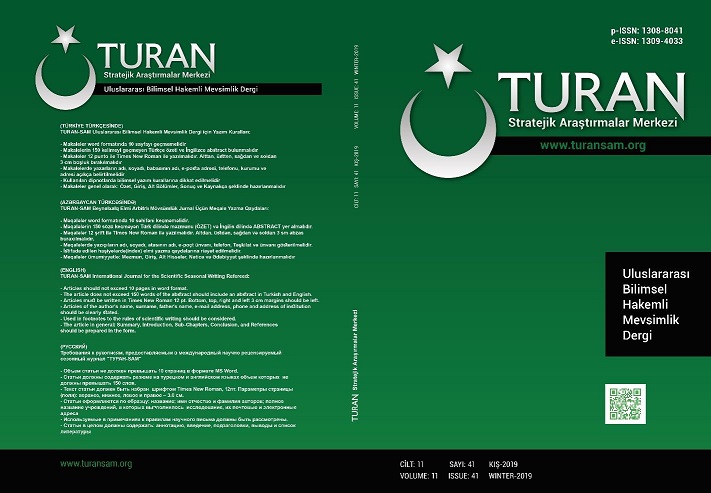ALAADDİN SABİT BOSNALI“KÜLLİYATI”NIN YAZMA NUSHALARININ KARŞILAŞTIRILMALI İNCELENMESİ
A COMPARATIVE STUDY OF ALAEDDIN SABIT BOSNAVI’S “KULLIYAT” COPIES
Author(s): Şehla HalilliSubject(s): Cultural history, Poetry, Comparative Study of Literature, Turkish Literature, 17th Century, Philology
Published by: Sage Yayınları
Keywords: copy; comparison; secretary; Sabit; text; Alaeddin Sabit Bosnavi; Kulliyat;
Summary/Abstract: The information about the life and creative activity of Alaeddin Sabit Bosnavi, well-known representative of Turkish literature is found in translations, encyclopedias, textbooks and scientific literature. He was born in Hijrah 1060 (Chr. 1650) in Uzice settlement of Bosnia. The poet received his primary education from one of outstanding scholars of Bosnia, Khalil Afandi. Afterwards, he came to Istanbul to continue his education. Later Sabit had worked in provinces of Edirne, Crimea, Tekirdağ, Sarajevo, Konya, Diyarbakır as a confessor, mevlevi and mudarris in different years. Sabit died on Shaban 3, 1124 (September, 1712). Sabit has “Divan”, “Derename”, “Barbarname”, “Adham and Huma” masnavis, “Zafarnama” written for Crimean khan, Salim Garay, large poem “Amrulleys”, play like “Hadisi- arbain translation and interpretation” half prose and verse. Sabit wanted to create “Khamsa” with his plays, but failed as he passed away. Despite the wide spread of the manuscripts of Sabit’s “Kulliyyat”, they have not been comparatively studied in the Azerbaijani literature. AlaeddinSabitBosnavi’s "Kulliyat" was compared with other manuscript copies obtained and analyzed either historically and textual, or philologically by us. While copying the copies, upon trying to discover the differences, mistakes and distortions between the texts, we have found each text’s containing of a number of errors. There are cases of accidental or deliberate diminution of words, as well as missing or addition of words. Some copies have corrections of these errors in the edges of the pages, while, some do not. We believe that, the corrected mistakes or distortions caused by the secretary's negligence or low level of knowledge. The secretary copied to his own wish, but needed to show the words or phrases that he believed to be wrong inside the copy he transcribed on the edge of the page. There are sufficient purposeful or aimless errors and omissions in the copies of Sabit’s “Kulliyyat”. Taking into account the requirements of the text studies, these copies have been comparatively analyzed.
Journal: TURAN-SAM
- Issue Year: 11/2019
- Issue No: 41
- Page Range: 354-359
- Page Count: 6
- Language: Turkish

